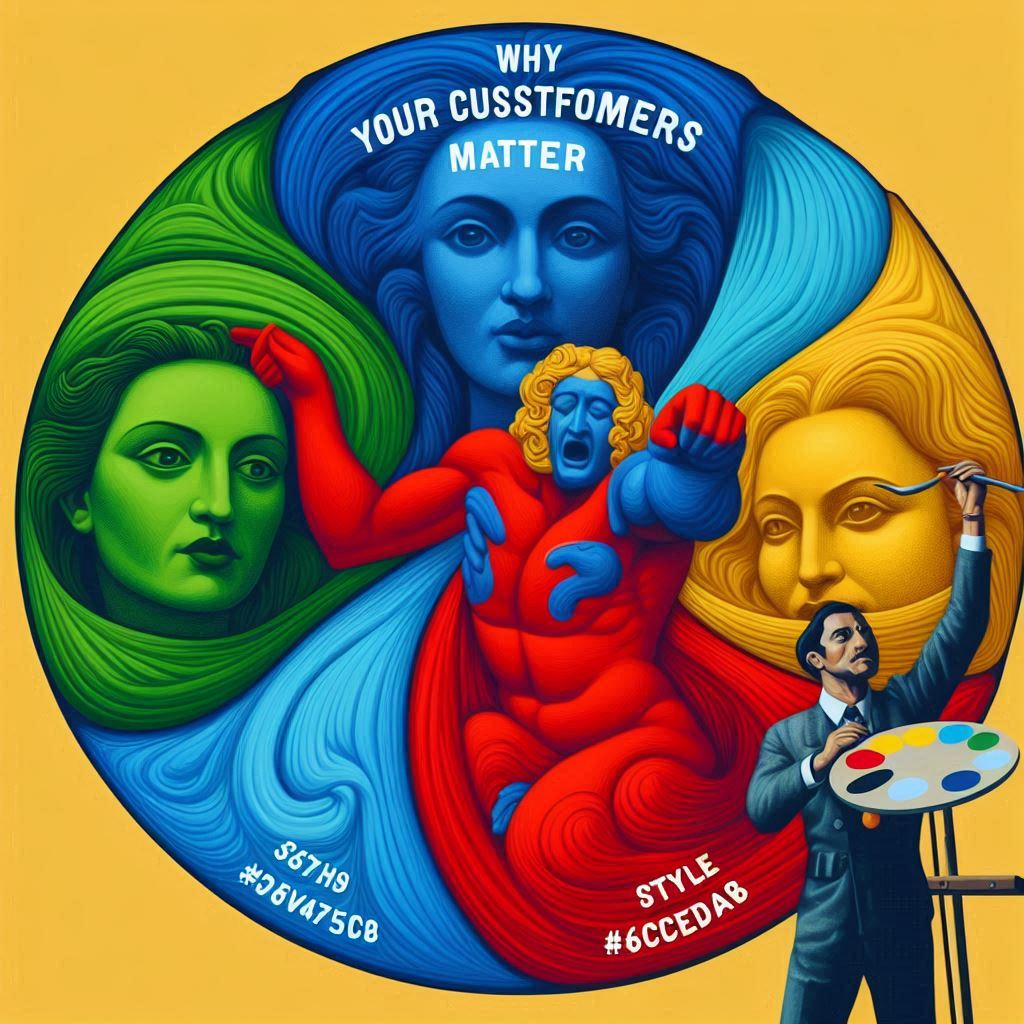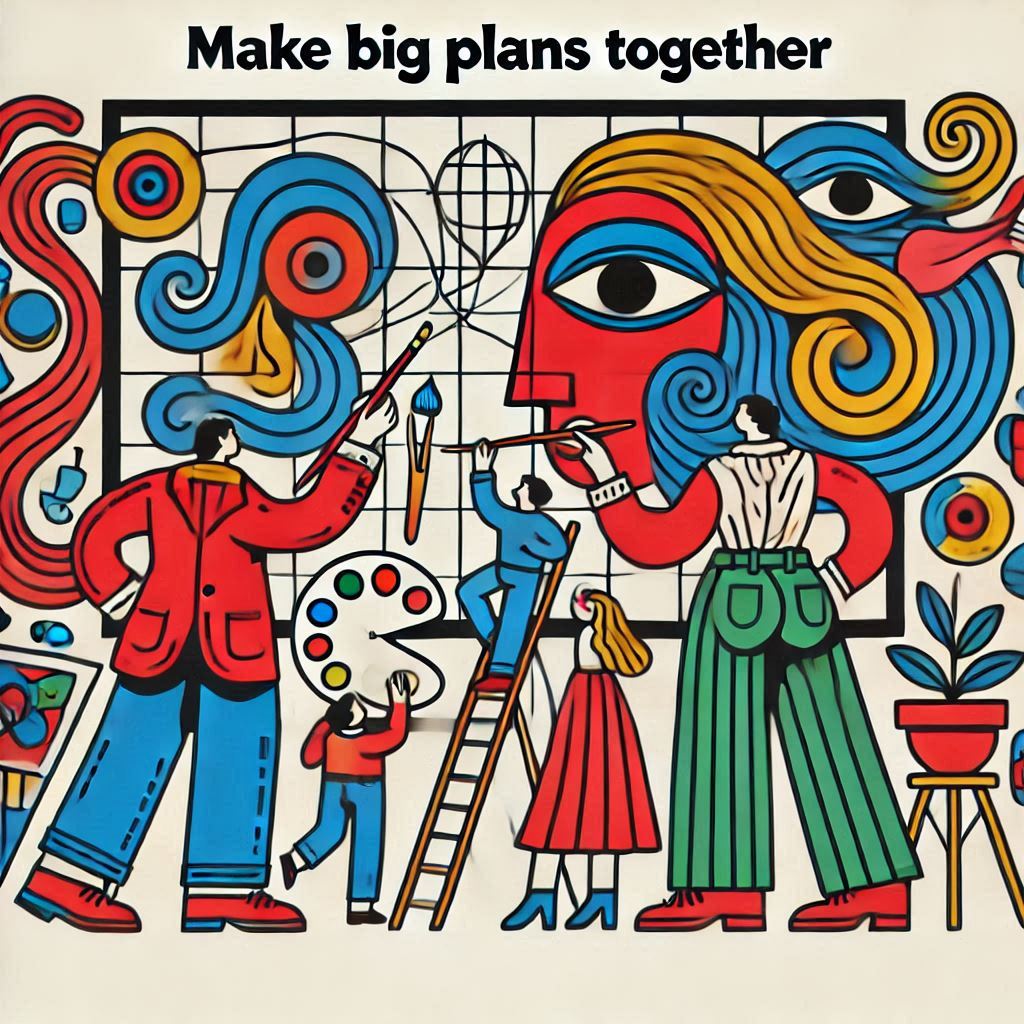The Four Types of Customer Relationships
In the business world, building and keeping customer relationships is very important. How a company interacts with its customers can really affect how successful it is. Businesses can nurture four different types of customer relationships, each with its own special traits and strategies. By understanding and handling these varied relationships well, companies can serve their customers better and ultimately make their business grow.
Let’s explore these four types of customer relationships and how they can help businesses.
Getting to Know Customer Types
People You Just Met
When meeting someone for the first time, it’s essential to understand the type of relationship. Customer relationships can vary: transactional, long-term, personal assistance, dedicated personal assistance, self-service, automated services, communities, co-creation, and switching costs.
To build a relationship with a new acquaintance, you need to learn about their needs and preferences. This can also involve personalized services, user communities, and co-creation.
Making a good first impression involves providing personalized service, customized services, and tailored information.
For example, Amazon.com lets customers write reviews and engages them in product design and content creation, adding value to the relationship.
Grown-up Leeches?
In a customer context, “Grown-up Leeches” behave like unprofitable and disloyal customers. They demand much attention and resources without adding much value to the company. These customers are generally unhappy, expensive, and not interested in a long-term relationship with the company.
Businesses can handle “Grown-up Leeches” by identifying and categorizing them based on loyalty and profitability. Then, they can allocate minimal resources to these customers and focus on more beneficial customer segments. In some cases, letting go of such customers may be necessary to reallocate resources.
To prevent “Grown-up Leeches” from negatively impacting the customer experience, businesses can implement strategies such as gradually increasing prices for such customers or setting caps on the resources allocated to them. Providing self-service options and automated services can minimize direct interaction and operational costs with these customers, helping to mitigate their negative effects on the overall customer experience.
Fluttery Followers
Fluttery Followers, also known as “Butterflies” on the blog, are highly profitable but not very loyal. They tend to switch brands, even though they make quick purchases and generate revenue. To keep them coming back, businesses can offer personalized rewards and incentives. Targeted marketing and excellent customer service can also help. Implementing loyalty programs, exclusive offers, and customized communication can further solidify their loyalty.
Businesses can establish stronger, long-lasting relationships and improve customer retention by building trust and consistently delivering value.
Buddies for Life
“Buddies for Life” helps build strong customer teams by forming long-term, deep relationships with its customers.
The focus is on establishing an intimate and lasting connection with the customer, creating a sense of loyalty and camaraderie beyond the typical transactional relationship.
This can be achieved by assisting customers, dedicating personal assistance to individual clients, and engaging in co-creation activities with customers.
Additionally, offering automated services, creating communities, and understanding customers’ switching costs allow Buddies for Life to tailor its strategies to build strong and lasting relationships with its customer base.
Forming these lasting relationships can lead to an increased understanding of customer needs and preferences, higher customer retention rates, and the potential for customers to become brand advocates.
Investing in customer relationships can ensure long-term profitability and success.
Why Your Customers Really Matter

Building strong and loyal customer teams brings long-term benefits. These include increased customer retention, brand advocacy, and customer lifetime value.
Making big plans together with customers enhances the relationship and drives business success. It creates a sense of ownership and partnership, fosters mutual respect, and aligns business goals with customer needs.
Being the first to say ‘hi’ and answering when customers call for help is essential for building trust, showing empathy, and providing quality customer service. This quick and attentive response can significantly impact customer satisfaction and loyalty, ultimately leading to business growth.
Customer Teams vs. Lone Rangers
Working alone gives you independence and freedom. You can make decisions on your own without needing others. But, working alone may mean you don’t have the support and resources that customer teams have. This could affect how well you can meet customer needs.
On the other hand, being part of a customer team allows for working together and sharing expertise. This can lead to better and more effective solutions for clients. Customer teams can also provide better support, leading to happier and more loyal customers.
When it comes to building relationships, working alone might make it hard to stay connected with clients consistently and personally. On the other hand, customer teams can use their combined knowledge and skills to build stronger and longer-lasting relationships. This can result in more personalized service and happier, more loyal customers.
Building Strong Customer Teams
Be the First to Say ‘Hi!’

First, saying “Hi!” to new customers can lead to long-term relationships. This can result in dedicated personal assistance and strong customer teams. Making big plans together and using the right technology can make the relationship self-service and automated. This should be considered in sales and marketing plans.
Answer When They Call for Help!

Saying ‘hi’ first is essential. But it’s not the only thing that matters. “Answer When They Call for Help!” is about more than just waving hello. It’s essential to make a plan and carry it out effectively. The blog advises different strategies, from greeting strangers to building strong friendships. Creating great customer teams is a big focus. It’s about using customer relationships and loyalty to grow the business.
The blog stresses the importance of investing in customer relationships and tailoring strategies accordingly. Expanding digitally with user communities and co-creation is one key strategy for customer relations.
Make Big Plans Together

Collaborating with customers to create and execute big plans involves several strategies.
For example, a company can:
- Engage customers in decision-making and future planning by creating user communities.
- This allows customers to exchange knowledge and solve each other’s problems, helping the company better understand their needs.
Additionally, companies can:
- Go beyond the traditional customer-vendor relationship.
- Co-create value with customers by involving them in product design or inviting them to create content for public consumption.
These collaborative efforts can result in innovative products and services that better meet customer expectations.
Involving customers in big plans can also:
- Help increase their loyalty and brand advocacy.
- Make them feel like an integral part of the company’s success.
Secret Handshakes: Building Cool Customer Teams
Understanding the different types of customers – like strangers, barnacles, butterflies, and true friends – helps businesses customize their marketing strategies. This helps build strong customer teams, nurturing loyalty and profitability. Prioritizing customer teams over individual interactions ensures long-term engagement and mutually beneficial relationships. Effective strategies include personalized interactions, co-creation, and offering dedicated personal assistance.
These form deep, long-term relationships, leading to strong customer teams and brand loyalty.
How Our Club Makes Friends with Customers
The club interacts with new customers in two ways: through transactions and long-term relationships. Firstly, they start with transactions, like self-service or automated options, to meet immediate needs. Then, they focus on building long-term relationships by offering personal assistance and creating a deeper connection.
They also use communities and co-creation to encourage engagement. This helps to involve customers in product design and fosters strong customer teams.
These strategies help the club build friendships with customers, adjust marketing strategies, and prioritize investments based on customer value.

Vizologi is a revolutionary AI-generated business strategy tool that offers its users access to advanced features to create and refine start-up ideas quickly.
It generates limitless business ideas, gains insights on markets and competitors, and automates business plan creation.


